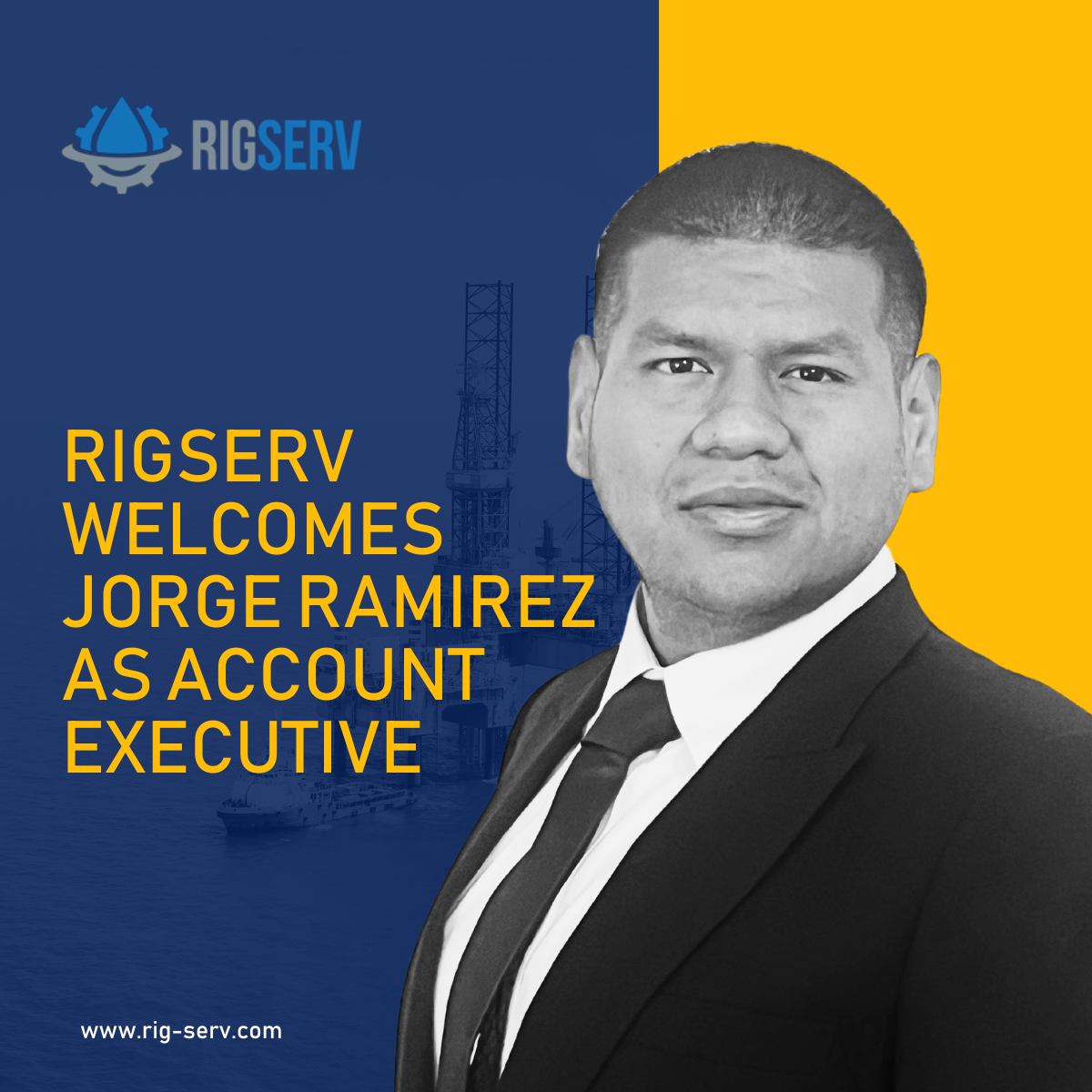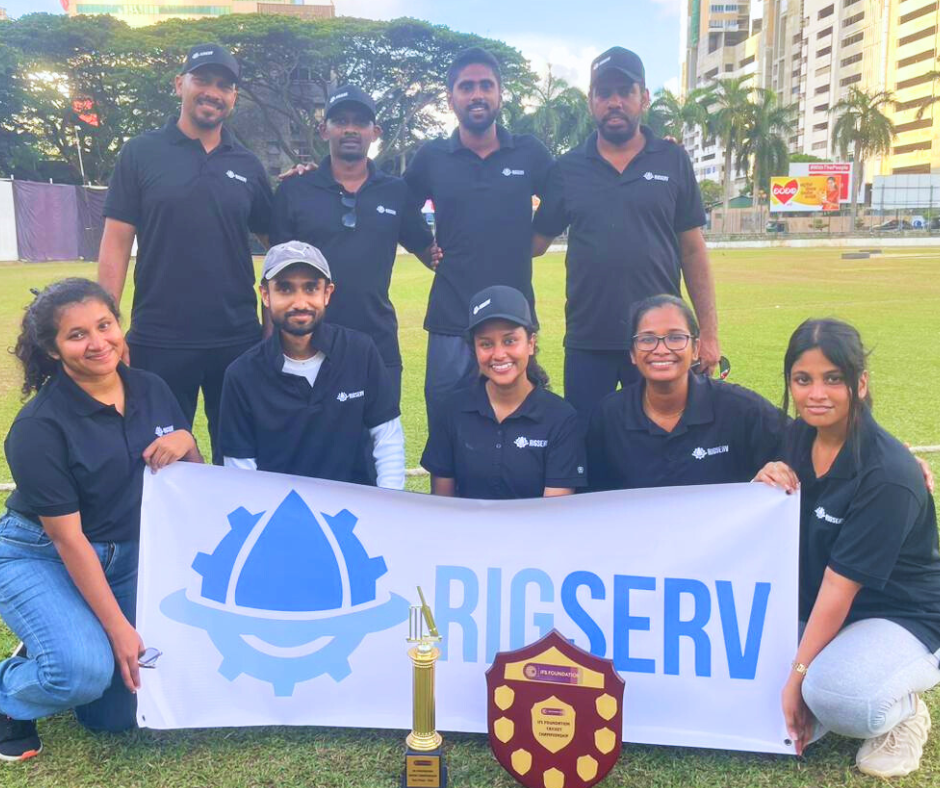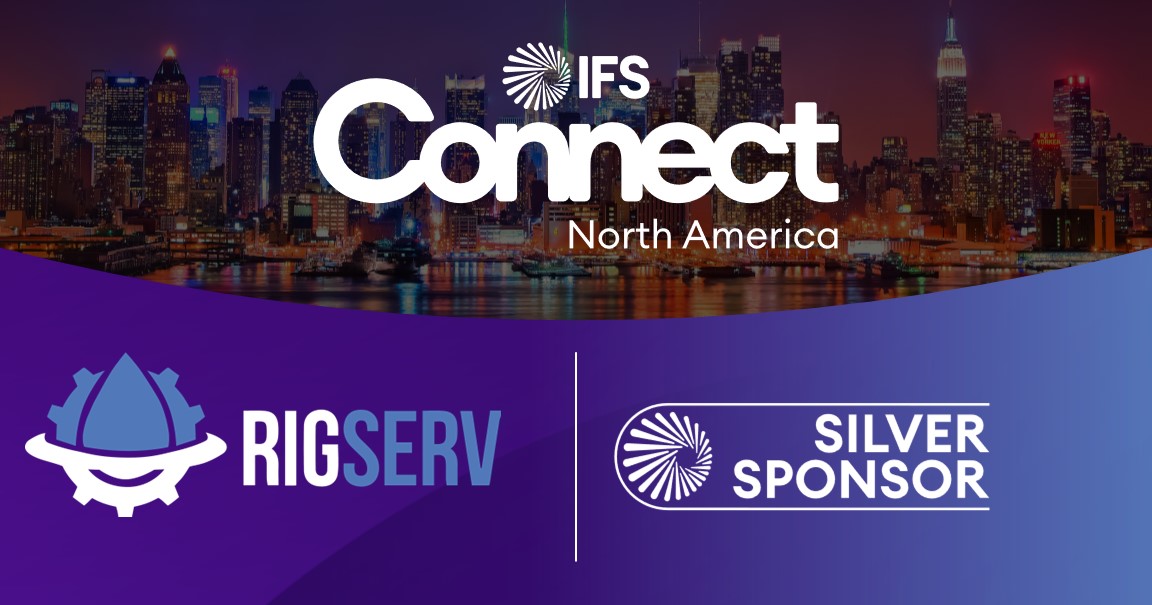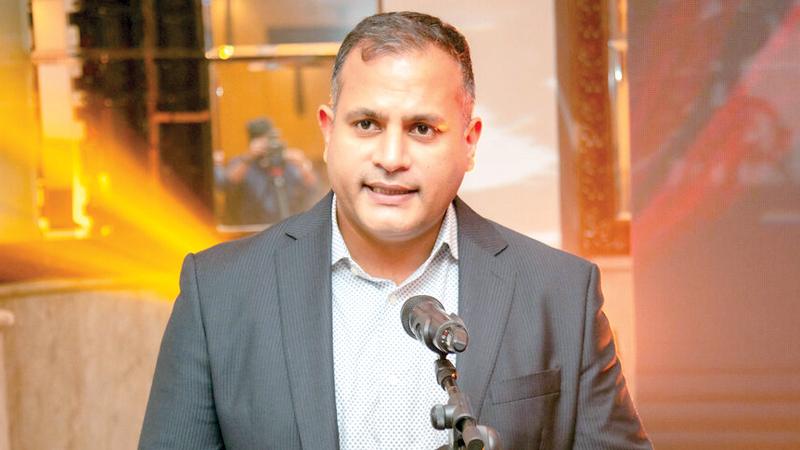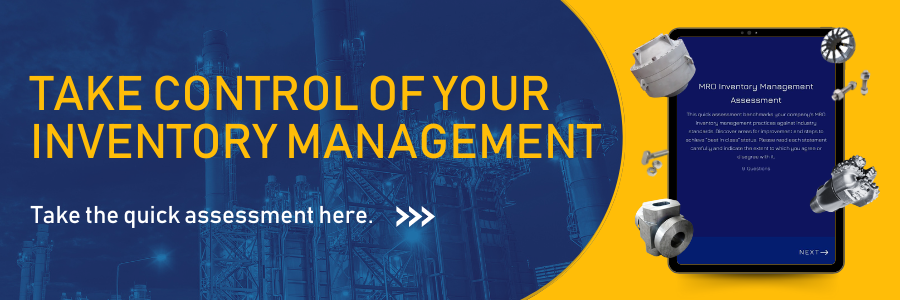Interview with Chris Kadavil, Co-Founder
The level of complexity involved when dealing with the ERP space requires a kind of obsession with puzzles. An obsession that starts with the founders and spreads into the whole company culture.
As Peter Thiel puts it: “No company has a culture. Every company is a culture.“
If every company is a culture, then the business values are simply an extension of the founders’ values.
We recently sat down with the driving force behind this problem-solving engine, co-Founder of RigServ – and born problem-solver – Chris Kadavil. Once you get a closer peek into his mind, you won’t be surprised that despite the high-stress environment and constant onslaught of problems, he never seems to run out of energy.
Here’s what you’re going to learn from this interview:
- Why creating an accurate map is much more critical than turning it into reality.
- Why do most businesses get stuck in implementation, and what to do about it
- How do you test out the new system without turning everything into chaos
- What makes Sri Lanka the ideal hub for IFS & ERP technologies
If you have ever wondered what goes on in the mind behind an operation like RigServ, and are a person who believes that “the harder the problem, the better,” then this interview is for you.
Why did you start RigServ? What was the moment when you decided you were going to start your own business?
CHRIS: I’ve been a consultant in the oil and gas industry for 15 years before we started RigServ. I kept seeing the same problems, and together with Chris Collins, we decided that we could do a lot of good for the industry from the outside as a separate entity. Bring in vision and technology to those customers and deliver something of value. Chris & I were working together on various customers and projects, and we’ve been friends for a long time – it only made sense that we ended up starting it together.
At what point did you start branching out of oil & energy?
CHRIS: Before RigServ, we did quite a bit of non-oil & energy work in medical space, tech, and insurance. Although for the last 15 years, oil & energy has been our core markets, we do branch out into the marine industry, shipping, ports & terminals, and refineries. We branch out because these industries have similar problems – from a tech and data standpoint. Everybody has similar issues.
When it comes to common problems your customers usually face, “weak planning” seems high up on the list. Since it’s a very generic & broad problem, the question is: *When looking through the lens of technology, what specifically were your customers doing wrong before you came in?
CHRIS: From a new technology standpoint, are you using or exploring what’s out there as far as the latest technology and what technology can do for your business?
What usually happens is that businesses get pressure-sold into the “latest & greatest” technology that doesn’t fit their environment and their needs—the good old high-pressure sale combined with a shiny-object syndrome.
There needs to be a real-world application of that particular technology to your business. Before you roll out the new tech, you need to ask yourself: will we see actual value from the implementation? Is it a fit for the customer, environment, and the specific maturity of the rest of our systems?
There’s, however, the flip side of that: the technology that’s tried and tested would do a great deal to advance interoperability between your systems or just streamline your workflows.
CHRIS: The investment can be in various milestones – from the proof of concept to full-on implementation. So, depending on where they are, it’s not necessarily that we’ll talk them out of the idea.
If it’s proof of concept, let’s make sure that it does fit before we make more significant investments, or we’re too far down the implementation to go back on that.
I’ve seen many instances where devices just don’t fit the environment. They may have tiny little buttons; the users have thick gloves on because it’s a harsh environment – so they can’t input anything onto the device.
Hence why developing the use case ahead of time is so crucial. And asking questions like: Is this going to fit the purpose? Is it going to fit the user and user experience too?
You don’t necessarily have to scrap the whole implementation. It may be a device swap out or finding something with larger buttons that works in a harsh environment.
One of the other most common problems your customers face is getting stuck in the implementation or waiting too long. Why do you think that happens?
CHRIS: It’s a combination of bad implementation experiences in the past and just the doom and gloom of a large project. It’s a significant undertaking, and you ask yourself: do I have the resources for it? How and where am I going to find those people to do it?
Everybody I have is fully tasked. So they can’t really go on a project committee on top of what they’re already doing, but
You may also be asking yourself whether it’s genuinely broken. Do I have to upgrade, and why do I have to upgrade? What am I going to get for the upgrade?
Once you run past the end of life on the support, there is a risk that you’ve got an outdated system.
My own team just has to be involved to the point that they actually have to be involved in, not do every little bit of this implementation.
CHRIS: Part of it is the experience that RigServ brings. We’ve got real-world experience with the actual process and how this happens in real life. Thus, we can translate that experience into use cases and stories, which we build into test cases.
Here’s an example of how we usually get it done. We first start with questions like: how did the process change compared to how you planned to do it? If that’s how you want to do it, what are the touchpoints? We then build out a tight use case scenario to get into all the nuances of what can happen in that situation. Finally, in collaboration with the customer, we identify the missing pieces of the puzzle – the missing touchpoints or fluctuations – we haven’t considered before.
It’s much more critical to bring out a real-world scenario and talk somebody through how this happens and how it’s planned to happen than to build it. The building part is easy – it’s simply built to the spec.
Probably the best metaphor is from Iron Man, where Tony Stark and Jonah (the villain) are both up in space. It gets super cold, and Tony Stark asks:
Well, Jonah didn’t know there was an icing problem.
It’s just our experience that we’ve been there before, we’ve done that before, and we know to look for that problem.
What about pressure testing? Sometimes, the purpose of a test is to see what’s going to break. So, even with all your experience, are there ever situations where the tests turn up results you didn’t expect?
CHRIS: It’s rarely perfect the first time around, and that’s why there are multiple types of tests: functionality, performance, user experience, etc.
Once, as a part of the performance test – we flooded the system with 1000 entries per second – to see whether it would break. It didn’t break, but many processes started falling behind. And, when one process starts falling behind, there’s a trickle-down effect. As a result, to prevent that from happening in the future, we had to scale up some services and the environment to meet that potential demand.
This seems to be the Operation Simulation Workshop. Could you walk me through a recent operation simulation workshop you did that was outside of Oil & energy?
CHRIS: When we typically migrate data, there are usually about three years of data that we’re moving. And sometimes, that migration window is pretty tight. So when we move all of that data at once, we’ll do a test on a smaller sample just to see that it does move it lands in the right place.
It matches what it was before. And then, we open the gates and let the big D data set flow. And there was a point where part of the data was very large – documents and images – and that started to slow down the transfer. It was just the volume of data that was involved. So the migration timeline, the window went from X amount of hours to X plus Y hours.
So knowing that we’re moving these binary files, megabytes, and tons of data, we knew we had to give it a little bit more time.
You and Chris [Collins] have touched a lot of different technology, platforms, and databases over the years – Oracle, IBM, SAP, etc. Basically, all the big players. Now you moved on from all the different platforms, zoomed in on IFS, and moved offices to Sri Lanka. How did you find them, and why did you decide to partner with them?
CHRIS: We’ve been an IFS partner for a long time. Even before we got to partner status, we believed in the technology and the group behind IFS. They are interested in making a real value proposition in the ERP space. They’re interested in developing a solution that’s right for the customer – whether it’s pre-packaged templates or extensions that fit that vertical. Also, their model is one where partners can help and bring in their domain knowledge. not just an ERP system.
You usually have to change your processes to work with the system. With IFS, the question becomes, how does this ERP system help you do your operations.
You mentioned that IFS builds extensions and different templates designed for the existing use cases within the oil & energy, food production, chemicals, and other verticals.
Could you go into a bit of detail as to what impressed you about that level of customization?
CHRIS: They took their experience with certain verticals, like oil and gas, for example, and turned all of the original customizations, the proven ideas, and turned them into an extension for that vertical.
So now, all of those 15 – 20 years of experience building that solution and the way that an oil & gas customer would use it is a pre-packaged tool that’s quickly implementable.
Your business unit could move, and every piece of asset that’s tied to that business unit moves with it, which isn’t typical for how an SAP plant is set up.
Now, a little Easter egg topic – tell me about the move to Sri Lanka. Why Sri Lanka? Could you walk through the process of how you went from Houston, Texas, to this significant presence over there?
CHRIS: Sri Lanka has historically been a hotspot for IFS development. They set up their R&D center there and invested a lot of resources into training out of universities and building them up. All of the technology that goes into IFS has been developed there. It was just a natural fit for us to be close to where the development of this technology happens.
Just being as close to the source of the technical side allowed us access to a great pool of resources with lots of knowledge, and we combined that with the industry experts from the rest of our consultants, and it’s just a good fit.
Is there something about the Sri Lankan culture that lends itself to this type of work?
CHRIS: For one, there’s high technical aptitude there. They’re also highly educated and value education as a country. Their English is one of the best outside the native English-speaking countries. As such, they can communicate well, both written and verbally. Simply having access to a country that values education and innovation makes them a natural fit for this specific technology.
You have a nice firm foothold in oil & energy. You’ve got an amazing partnership with IFS. However, the ERP space is flooded, the sales tactics used are abysmal, and almost every company has had a bad implementation experience.
Now with that in mind, let’s look out into the future and dream out 5 – 10 years ahead. Where do you want RigServ to fit into the greater technological ecosystem? Where do you want the organization to be relative to everyone else?
CHRIS: We specialize in oil & energy, but we touch various other verticals and will continue to do so.
IFS is projected to have exponential growth over the next few years, and we’re going to poise ourselves so that we’re prepared to support their growth. Both from an investment internally in our own people and resources, our secondary office in Sri Lanka, but also investing in consultants and not just ERP consultants. Real consultants with domain knowledge, not just somebody that’s just highly technical. We see us not just flooding a project with consultants but also putting the right people on the project to speak to business processes and flows. Experts that understand why they’re implementing what they’re implementing.
IFS has exposed you to a variety of garden verticals. What industries do you want to be working in more? Is there a particular industry that excites you the most?
CHRIS: IFS has a significant footprint in aerospace and defense. We’d like to be more involved in that; high-tech and manufacturing just as much as oil and marine.
Aerospace? Are you thinking SpaceX? That’d be a fun client.
CHRIS: Yeah, they’ve been the ERP of choice for various customers in, in that space – whether they’re governed entities or contractors to government entities, but we’d like to, you know, help out in that space just as well as any other industry.
What gets you up every morning and keeps you going? How did you turn into an “ultra-marathoner” in this space?
CHRIS: I think I have the personality for it. I like to hear customers’ problems and figure out how to overcome them. I think both Chris and I are problem-solvers by nature. We always have our fingers out and listen to the solutions out there, asking how they fit our customers. We’re always trying to be innovative within RigServ to be aware of the solutions and ways of matching them up to a customer. In my head, I’m always thinking, “Could this be the right fit for these guys.”
Anytime we can make that customer happy with solving a problem, challenge, or offering a solution, we just feed off that energy.
I know this is like asking who your favorite kid is, but which project is/was your favorite?
CHRIS: I love all our projects like I love my children, but the most recent project with APMT has been challenging and rewarding at the same time. It has logistical, geographical, and technical problems that need a solution before mobilizing teams. On top of that, we had pandemic issues. It’s a conflict of every type of problem and challenge that could be out there. This [project] was one where we had to check all the boxes.
Basically, the harder the problem, the better.
CHRIS: Yes, it feels like a real accomplishment when you can solve a challenging problem.
Inventory Management Solutions
Asset Management Solutions
Distribution Management Solutions
